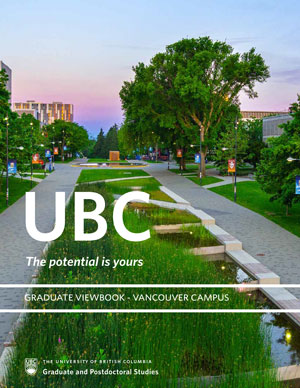Heather Bruce
Research Classification
Research Interests
Relevant Thesis-Based Degree Programs
Research Options
Research Methodology
Recruitment
My research is in evolutionary developmental biology (evo devo) using mainly the crustacean Parhyale, the beetle Tribolium, and the millipede Oxidus, but also sometimes horseshoe crab, tarantula, silverfish, sea spider, and other arthropods. My lab uses molecular, morphological, and embryological approaches to investigate arthropod appendages like legs, wings, and gills as a model to understand the origins and evolution of novel structures, and to elucidate how genetic networks evolve over immense phylogenetic distances of half a billion years.
Ultimately, I am interested in how genetic networks produce morphological diversity. This relates to the origin of novel structures like insect wings, which don’t seem to be derived from (homologous to) any structure in the ancestor. Co-option of genetic pathways by unrelated tissues is often invoked to explain the origin of novel structures. However, my research into arthropod novel structures like wings and carapaces suggests an exciting alternative: novel structures may evolve from existing structures (serial homologs) that persist cryptically in other lineages. Therefore, cryptic persistence of ancestral structures may explain the origin of many novel structures. Furthermore, if many novel structures arose from ancient structures, then many unexpected structures may in fact be related, and also far more ancient and evolvable than currently believed.
Complete these steps before you reach out to a faculty member!
- Familiarize yourself with program requirements. You want to learn as much as possible from the information available to you before you reach out to a faculty member. Be sure to visit the graduate degree program listing and program-specific websites.
- Check whether the program requires you to seek commitment from a supervisor prior to submitting an application. For some programs this is an essential step while others match successful applicants with faculty members within the first year of study. This is either indicated in the program profile under "Admission Information & Requirements" - "Prepare Application" - "Supervision" or on the program website.
- Identify specific faculty members who are conducting research in your specific area of interest.
- Establish that your research interests align with the faculty member’s research interests.
- Read up on the faculty members in the program and the research being conducted in the department.
- Familiarize yourself with their work, read their recent publications and past theses/dissertations that they supervised. Be certain that their research is indeed what you are hoping to study.
- Compose an error-free and grammatically correct email addressed to your specifically targeted faculty member, and remember to use their correct titles.
- Do not send non-specific, mass emails to everyone in the department hoping for a match.
- Address the faculty members by name. Your contact should be genuine rather than generic.
- Include a brief outline of your academic background, why you are interested in working with the faculty member, and what experience you could bring to the department. The supervision enquiry form guides you with targeted questions. Ensure to craft compelling answers to these questions.
- Highlight your achievements and why you are a top student. Faculty members receive dozens of requests from prospective students and you may have less than 30 seconds to pique someone’s interest.
- Demonstrate that you are familiar with their research:
- Convey the specific ways you are a good fit for the program.
- Convey the specific ways the program/lab/faculty member is a good fit for the research you are interested in/already conducting.
- Be enthusiastic, but don’t overdo it.
G+PS regularly provides virtual sessions that focus on admission requirements and procedures and tips how to improve your application.
ADVICE AND INSIGHTS FROM UBC FACULTY ON REACHING OUT TO SUPERVISORS
These videos contain some general advice from faculty across UBC on finding and reaching out to a potential thesis supervisor.
Supervision Enquiry
If this is your researcher profile you can log in to the Faculty & Staff portal to update your details and provide recruitment preferences.



